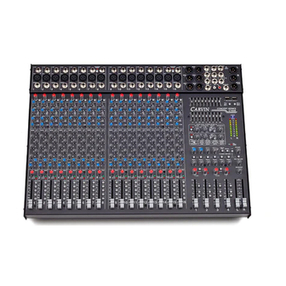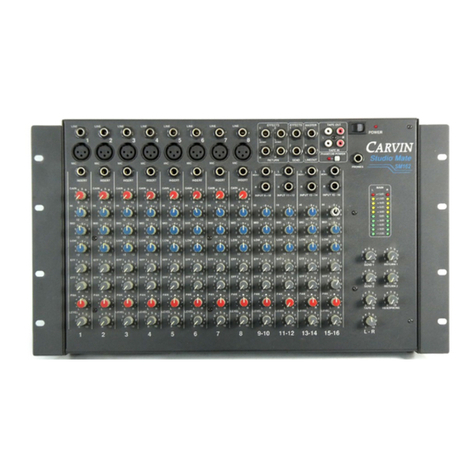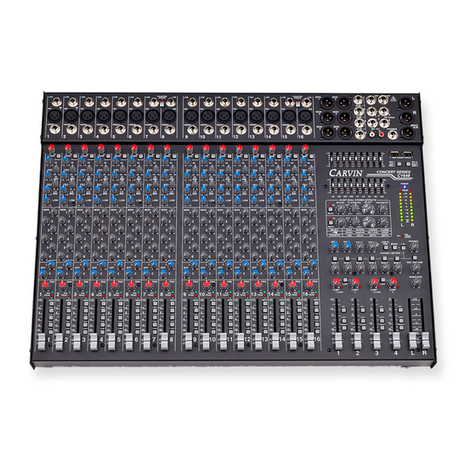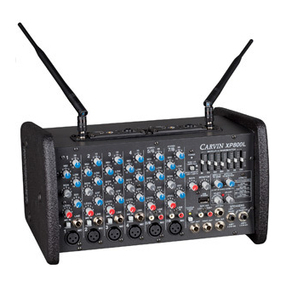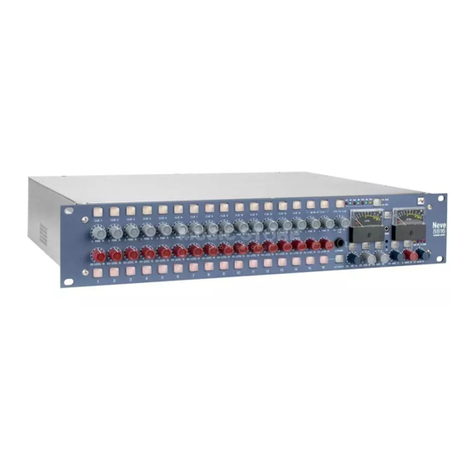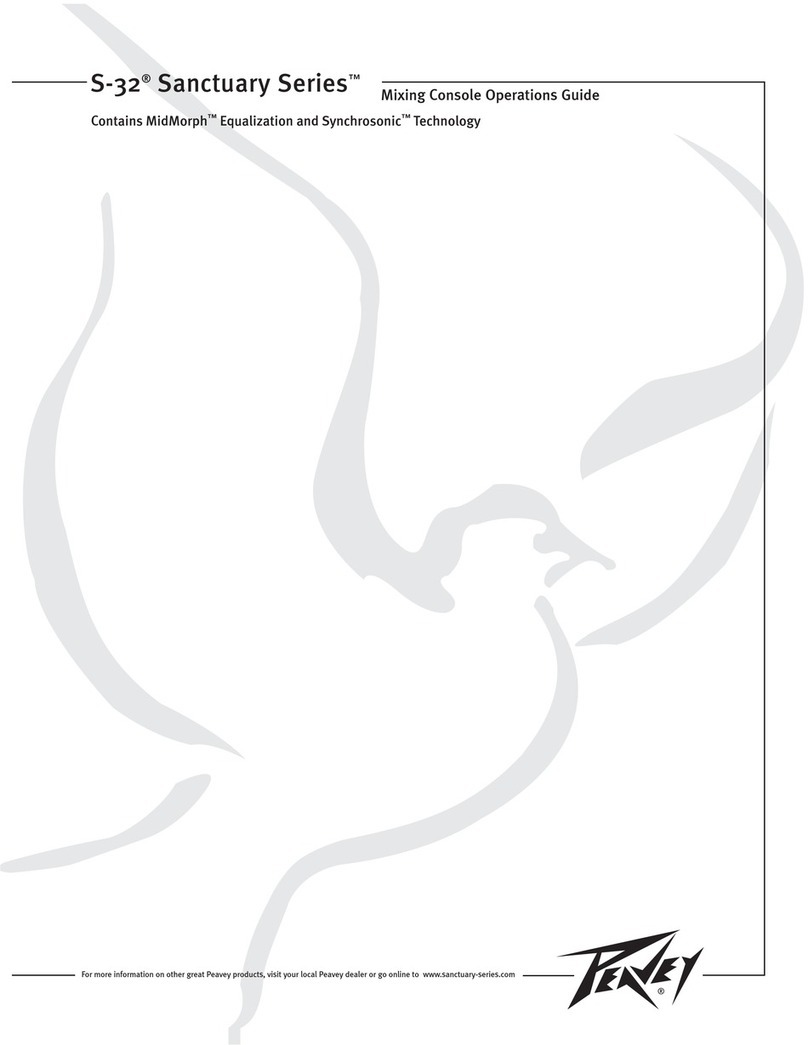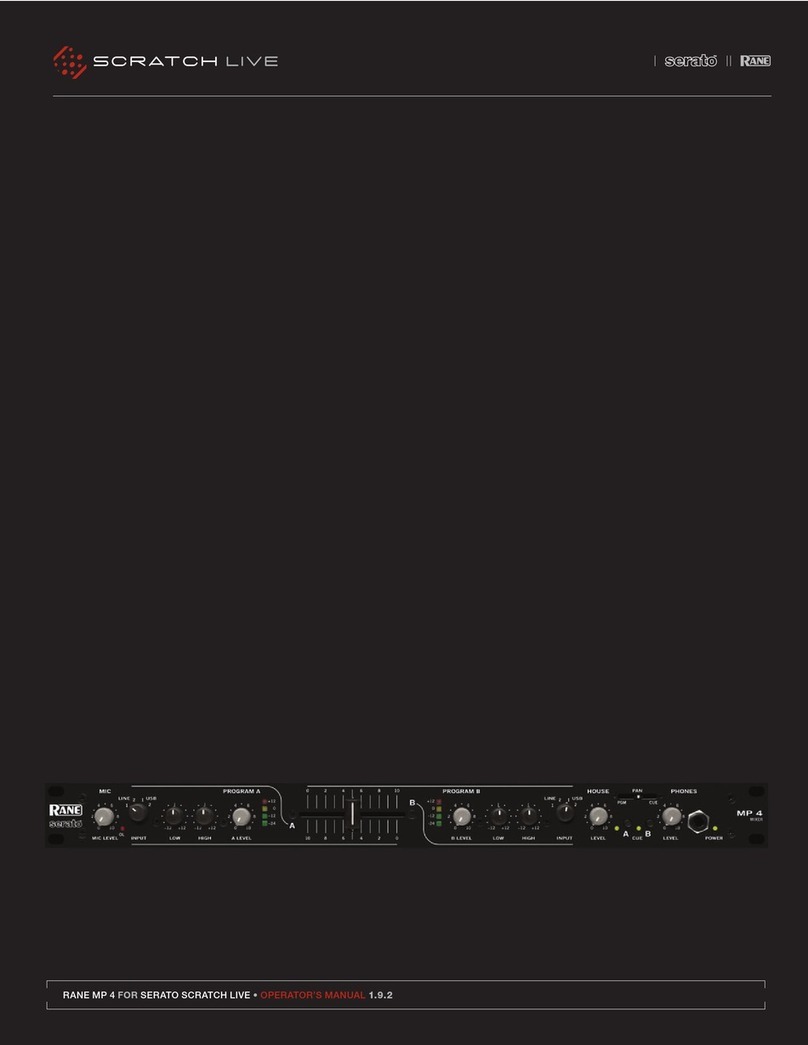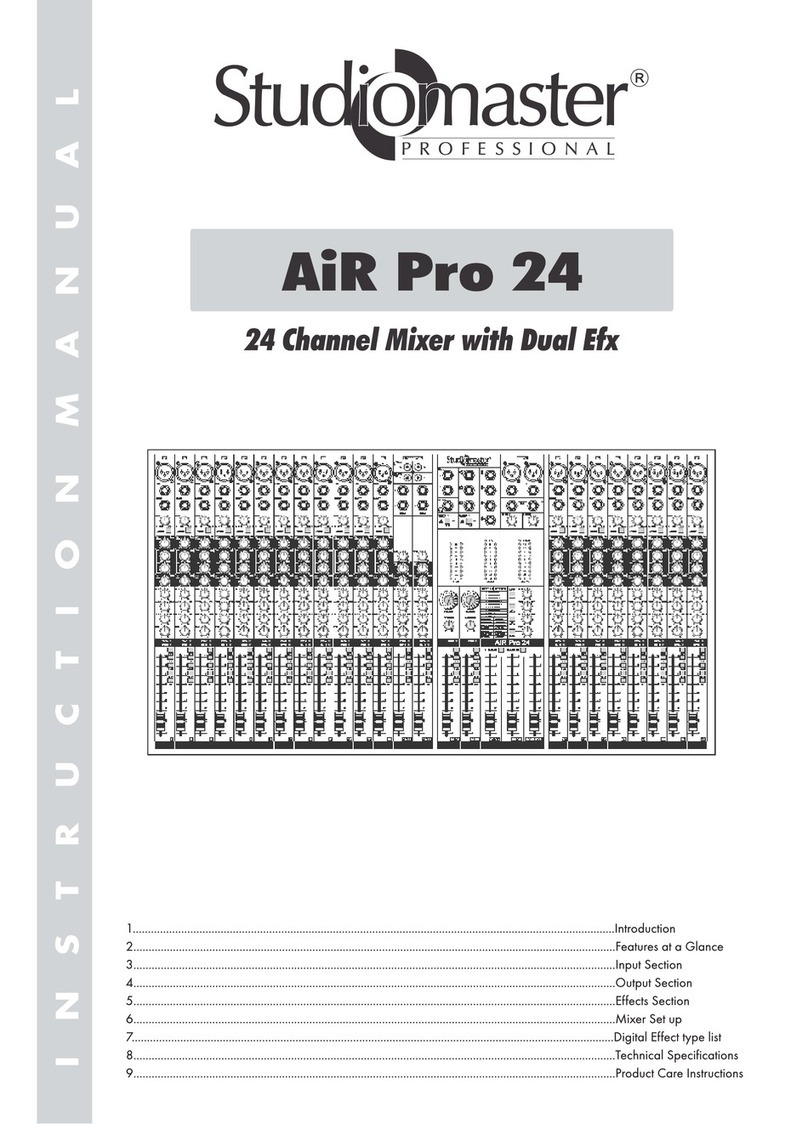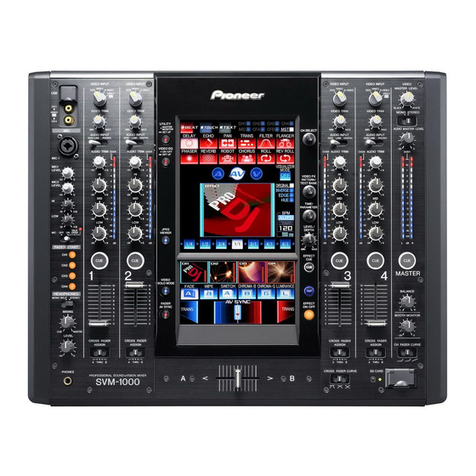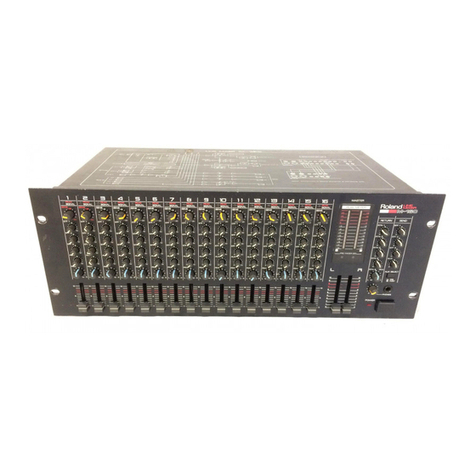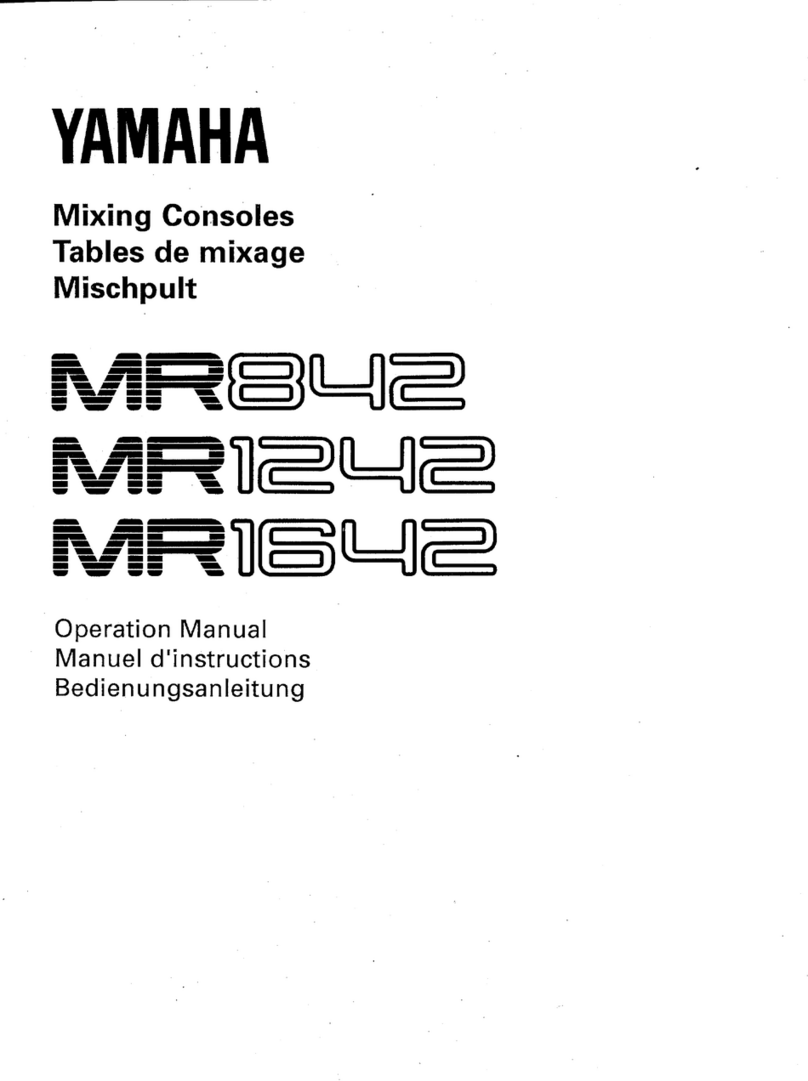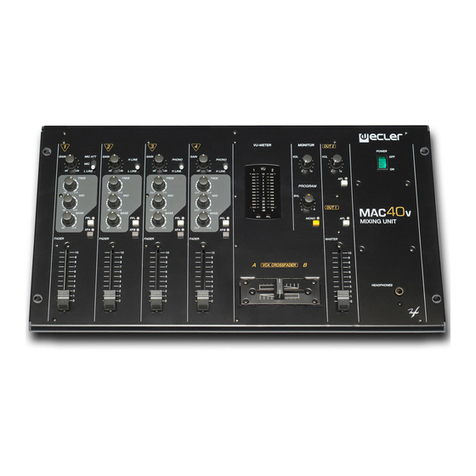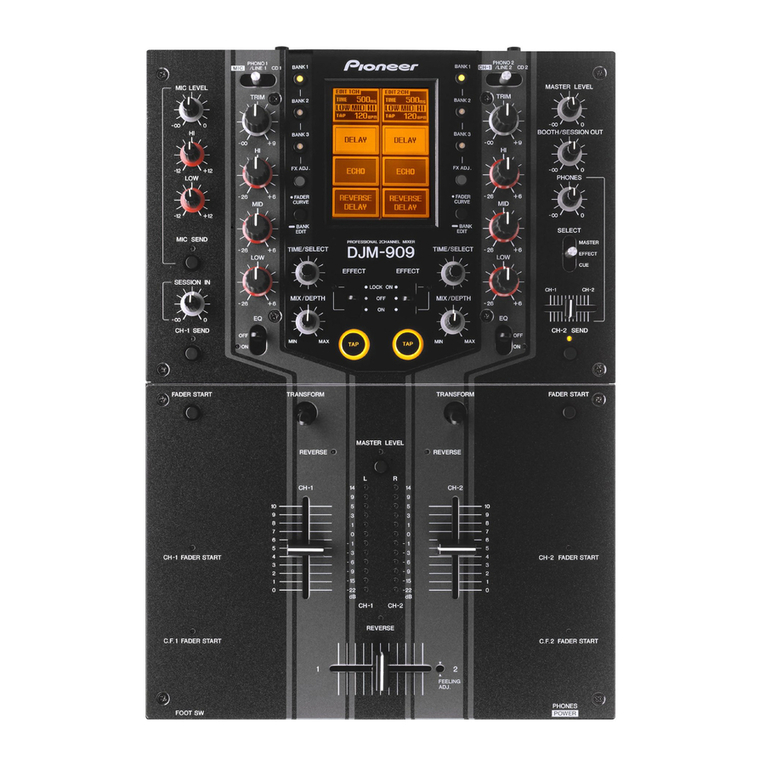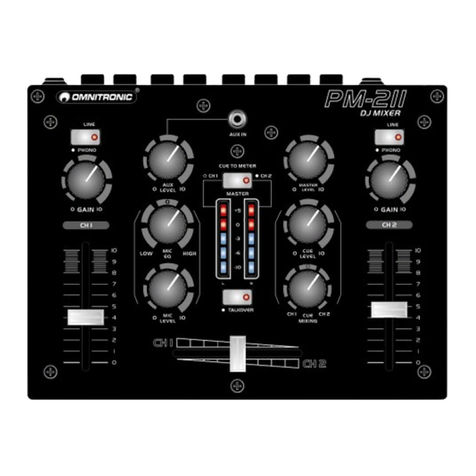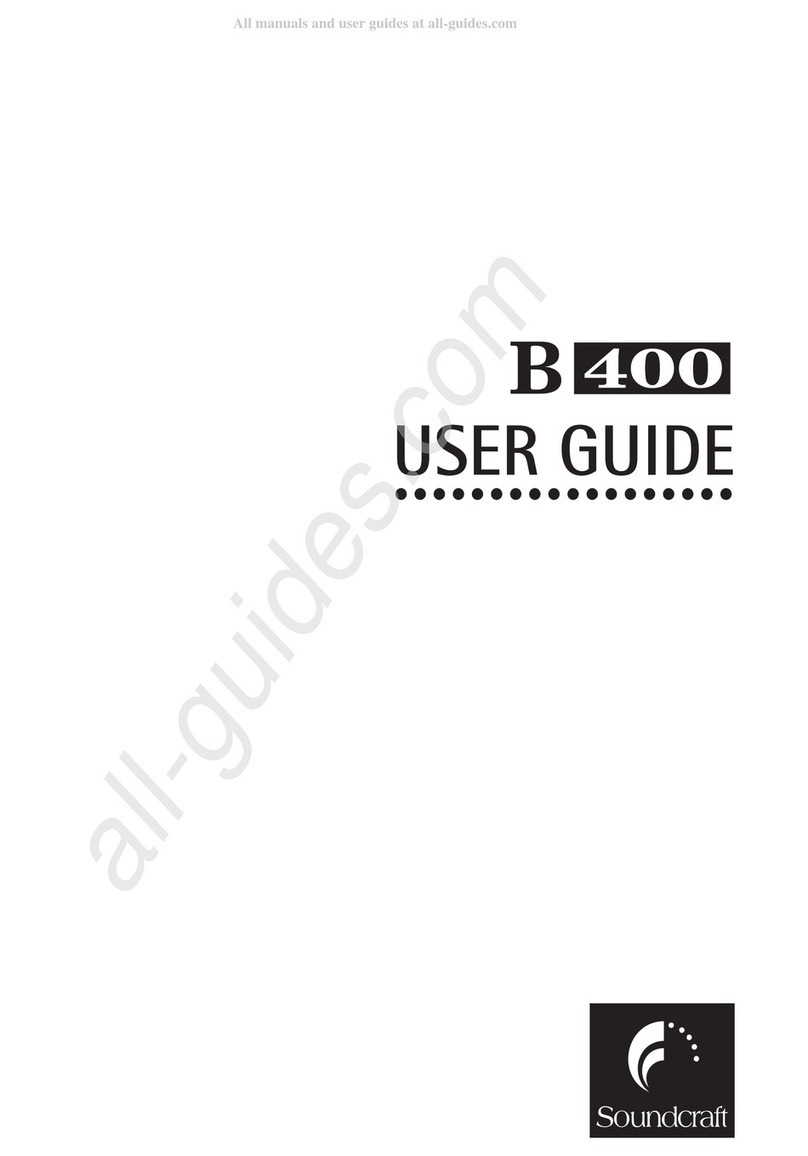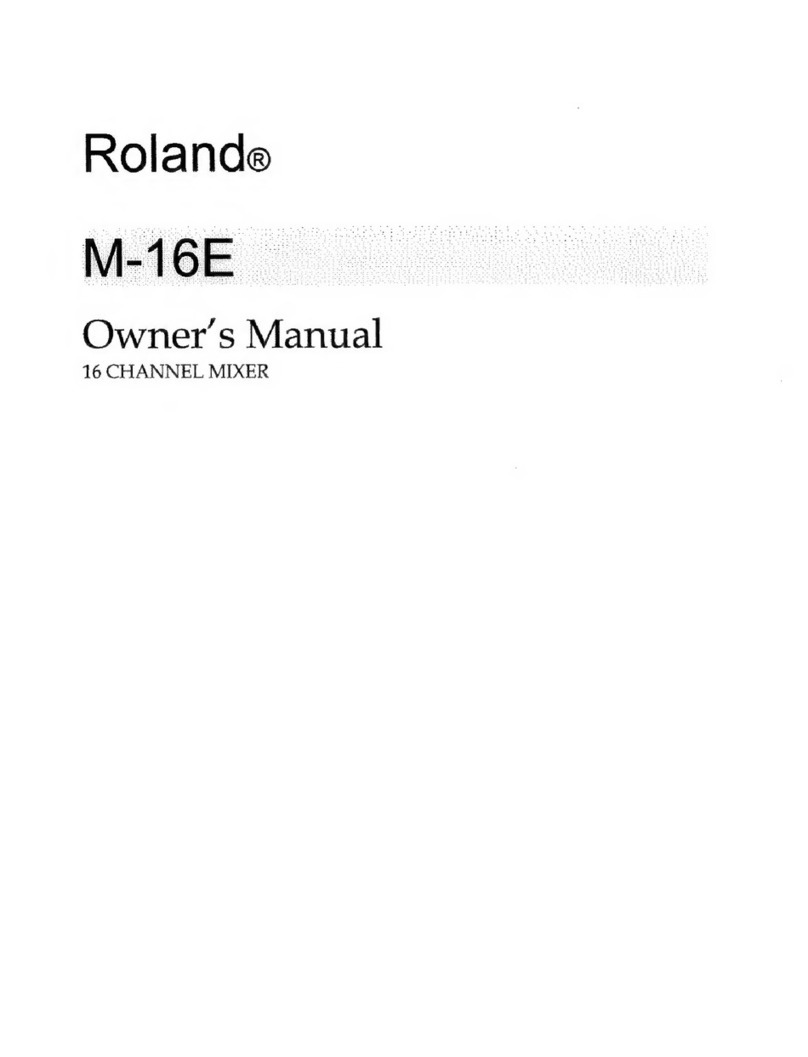CAUTION
RISK OF ELECTRIC SHOCK
DO NOT OPEN
SAFETY INSTRUCTIONS (EUROPEAN)
The conductors in the AC power cord are colored in accordance with the following code.
GREEN & YELLOW—Earth BLUE—Neutral BROWN—Live
U.K. MAIN PLUG WARNING: A molded main plug that has been cut off from the cord is
unsafe. NEVER UNDER ANY CIRCUMSTANCES SHOULD YOU INSERT A DAM-
AGED OR CUT MAIN PLUG INTOA POWER SOCKET.
IMPORTANT! FOR YOUR PROTECTION, PLEASE READ THE FOLLOWING:
WATER AND MOISTURE: Appliance should not be used near water (near a bathtub, washbowl,
kitchen sink, laundry tub, in a wet basement, or near a swimming pool, etc). Care should be taken
so that objects do not fall and liquids are not spilled into the enclosure through openings.
POWER SOURCES: The appliance should be connected to a power supply only of the type
described in the operating instructions or as marked on the appliance.
GROUNDING OR POLARIZATION: Precautions should be taken so that the grounding or polar-
ization means of an appliance is not defeated.
POWER CORD PROTECTION: Power supply cords should be routed so that they are not likely to
be walked on or pinched by items placed upon or against them, paying particular attention to
cords at plugs, convenience receptacles, and the point where they exit from the appliance.
SERVICING: The user should not attempt to service the appliance beyond that described in the
operating instructions. All other servicing should be referred to qualified service personnel.
FUSING: If your unit is equipped with a fuse receptacle, replace only with the same type fuse.
Refer to replacement text on the unit for correct fuse type.
REFER SERVICING TO QUALIFIED SER-
VICE PERSONNEL! THIS UNIT CON-
TAINS HIGH VOLTAGE INSIDE!
CAUTION
RISK OF ELECTRIC SHOCK
Ref. Des. Description Carvin P/N
A1 Op Amp NE5532 Linear Output 60-55320
A2 Op Amp MC4558 CP1 Dual HFREQ 60-45580
A3 Op Amp MC4558 CP1 Dual HFREQ 60-45580
A4 Op Amp MC4558 CP1 Dual HFREQ 60-45580
A5 Op Amp MC4558 CP1 Dual HFREQ 60-45580
A6 Op Amp MC4558 CP1 Dual HFREQ 60-45580
A7 Op Amp MC4558 CP1 Dual HFREQ 60-45580
A8 Op Amp MC4558 CP1 Dual HFREQ 60-45580
A9 Op Amp MC4558 CP1 Dual HFREQ 60-45580
A10 Op Amp MC4558 CP1 Dual HFREQ 60-45580
A11 Op Amp MC4558 CP1 Dual HFREQ 60-45580
A12 Op Amp MC4558 CP1 Dual HFREQ 60-45580
A13 Op Amp MC4558 CP1 Dual HFREQ 60-45580
A14 Op Amp MC4558 CP1 Dual HFREQ 60-45580
A15 Op Amp MC4558 CP1 Dual HFREQ 60-45580
A16 Op Amp MC4558 CP1 Dual HFREQ 60-45580
A17 Op Amp MC4558 CP1 Dual HFREQ 60-45580
A18 Op Amp MC4558 CP1 Dual HFREQ 60-45580
A19 Op Amp MC4558 CP1 Dual HFREQ 60-45580
A20 Op Amp MC4558 CP1 Dual HFREQ 60-45580
B6 Jumper 0Ω0.35" 50-00035
B7 Jumper 0Ω0.35" 50-00035
C1 Capacitor Ceramic 82PF 500 Volts 5% 45-82052
C2 Capacitor Ceramic 82PF 500 Volts 5% 45-82052
C3 Capacitor Electrolytic 10µF 50 Volt 20% 47-10051
C4 Capacitor Electrolytic 10µF 50 Volt 20% 47-10051
C5 Capacitor Electrolytic 10µF 50 Volt 20% 47-10051
C6 Capacitor Electrolytic 10µF 50 Volt 20% 47-10051
C7 Capacitor Ceramic 27PF 500 Volt 5% 45-27052
C8 Capacitor Ceramic 27PF 500 Volt 5% 45-27052
C9 Capacitor Ceramic 330PF 1000 Volt 10% 45-33113
C10 Capacitor Ceramic 0.0047µF 100 Volt 10% 46-47212
C11 Capacitor Ceramic 39PF 500 Volt 5% 45-39052
C12 Capacitor Electrolytic 10µF 50 Volt 20% 47-10051
C13 Capacitor Electrolytic 10µF 50 Volt 20% 47-10051
C14 Capacitor Ceramic 0.047µF 100 Volt 10% 46-47212
C15 Capacitor Ceramic 0.047µF 100 Volt 10% 46-47212
C16 Capacitor Electrolytic 10µF 50 Volt 20% 47-10051
C17 Capacitor Ceramic 0.047µF 100 Volt 10% 46-47212
C18 Capacitor Electrolytic 470µF 25 Volt 20% 47-47125
C19 Capacitor Electrolytic 470µF 25 Volt 20% 47-47125
C20 Not Used
C21 Capacitor Ceramic 680PF 500 Volt 5% 45-68152
C22 Capacitor Ceramic 330PF 1000 Volt 10% 45-33113
C23 Capacitor Electrolytic 10µF 50 Volt 20% 47-10051
C24 Capacitor Electrolytic 10µF 50 Volt 20% 47-10051
C29 Capacitor Ceramic 680PF 500 Volt 5% 45-68152
C30 Capacitor Electrolytic 10µF 50 Volt 20% 47-10051
C31 Capacitor Ceramic 680PF 500 Volt 5% 45-68152
C32 Capacitor Electrolytic 10µF 50 Volt 20% 47-10051
C33 Capacitor Ceramic 56pF 500 Volt 5% 45-56052
C34 Capacitor Electrolytic 10µF 50 Volt 20% 47-10051
C35 Capacitor Ceramic 56pF 500 Volt 5% 45-56052
C36 Capacitor Ceramic 680PF 500 Volt 5% 45-68152
C37 Capacitor Electrolytic 10µF 50 Volt 20% 47-10051
C38 Capacitor Ceramic 82PF 500 Volts 5% 45-82052
C39 Capacitor Electrolytic 10µF 50 Volt 20% 47-10051
C41 Capacitor Ceramic 82PF 500 Volts 5% 45-82052
C42 Capacitor Electrolytic 10µF 50 Volt 20% 47-10051
C44 Capacitor Ceramic 82PF 500 Volts 5% 45-82052
C45 Capacitor Electrolytic 10µF 50 Volt 20% 47-10051
C46 Capacitor Ceramic 82PF 500 Volts 5% 45-82052
C47 Capacitor Electrolytic 10µF 50 Volt 20% 47-10051
C48 Not Used
C49 Capacitor Electrolytic 10µF 50 Volt 20% 47-10051
C53 Capacitor Electrolytic 470µF 25 Volt 20% 47-47125
C54 Capacitor Electrolytic 470µF 25 Volt 20% 47-47125
C70 Capacitor Poly 0.47µF 100 Volt 10% 46-47412
C71 Capacitor Poly 0.022µF 100 Volt 10% 46-22312
C72 Capacitor Ceramic 0.1µF 100 Volt 10% 46-10412
C73 Capacitor Ceramic 0.0047µF 100 Volt 10% 46-47212
C74 Capacitor Poly 0.033µF 100 Volt 10% 46-33312
C75 Capacitor Poly 0.001µF 100 Volt 10% 46-10212
C76 Capacitor Poly 0.0068µF 100 Volt 10% 46-68212
C77 Capacitor Poly 0.001µF 100 Volt 10% 46-10212
C78 Capacitor Poly 0.0022µF 100 Volt 10% 46-22212
C79 Capacitor Ceramic 250PF 500 Volt 5% 45-25152
C82 Capacitor Poly 0.22µF 100 Volt 10% 46-22412
C83 Capacitor Poly 0.01µF 100 Volt 10% 46-10312
C84 Capacitor Poly 0.068µF 100 Volt 10% 46-68312
C85 Capacitor Poly 0.0033µF 100 Volt 10% 46-33212
C86 Capacitor Poly 0.022µF 100 Volt 10% 46-22312
C87 Capacitor Poly 0.001µF 100 Volt 10% 46-10212
C88 Capacitor Ceramic 0.0047µF 100 Volt 10% 46-47212
C89 Capacitor Ceramic 330PF 1000 Volt 10% 45-33113
C90 Capacitor Ceramic 330PF 1000 Volt 10% 45-33113
C91 Capacitor Electrolytic 10µF 50 Volt 20% 47-10051
C93 Capacitor Ceramic 0.047µF 100 Volt 10% 46-47212
C94 Capacitor Poly 0.022µF 100 Volt 10% 46-22312
C95 Capacitor Ceramic 0.1µF 100 Volt 10% 46-10412
C96 Capacitor Ceramic 0.0047µF 100 Volt 10% 46-47212
C97 Capacitor Poly 0.033µF 100 Volt 10% 46-33312
C98 Capacitor Poly 0.001µF 100 Volt 10% 46-10212
C99 Capacitor Poly 0.0068µF 100 Volt 10% 46-68212
C100 Capacitor Poly 0.001µF 100 Volt 10% 46-10212
C101 Capacitor Poly 0.0022µF 100 Volt 10% 46-22212
C102 Capacitor Ceramic 250PF 500 Volt 5% 45-25152
C105 Capacitor Poly 0.22µF 100 Volt 10% 46-22412
C106 Capacitor Poly 0.01µF 100 Volt 10% 46-10312
C107 Capacitor Poly 0.068µF 100 Volt 10% 46-68312
C108 Capacitor Poly 0.0033µF 100 Volt 10% 46-33212
C109 Capacitor Poly 0.022µF 100 Volt 10% 46-22312
C110 Capacitor Poly 0.001µF 100 Volt 10% 46-10212
C111 Capacitor Ceramic 0.0047µF 100 Volt 10% 46-47212
C112 Capacitor Ceramic 330PF 1000 Volt 10% 45-33113
C113 Capacitor Ceramic 330PF 1000 Volt 10% 45-33113
C114 Capacitor Electrolytic 10µF 50 Volt 20% 47-10051
D1 LED Red small #204HD 3mm T-1.00 60-75320
D2 LED Yellow small #204YD 3mm T-1.00 60-75340
D3 LED Red small #204HD 3mm T-1.00 60-75320
D4 Diode Rect Gen 1N4003 1A 200V 61-40030
D5 LED Red small #204HD 3mm T-1.00 60-75320
D6 Diode Rect Gen 1N4003 1A 200V 61-40030
D7 Diode Rect Gen 1N4003 1A 200V 61-40030
D10 LED Red small #204HD 3mm T-1.00 60-75320
D11 Diode Rect Gen 1N4003 1A 200V 61-40030
D12 LED Red small #204HD 3mm T-1.00 60-75320
ENC1 Rot Encoder Vert 5-bit Vert PCB MNT 25-22204
H1 10 Pin Vert SHS 2.5mm PCB MTG 23-11010
H2 8 Pin Vert SHS 2.5mm PCB MTG 23-11008
H3 4 Pin Vert SHS 2.5mm PCB MTG 23-11004
J1 Neutrik XLR Connect NL4FC FEM 21-40000
J2 Jack mono 1/4" 3 Pin 24mm Plastic 21-50345
J3 Jack RCA QUAD PC Vertical PC MTG 21-40022
J4 Jack mono 1/4" 3 Pin 24mm Plastic 21-50345
J5 Jack mono 1/4" 3 Pin 24mm Plastic 21-50345
J6 Jack stereo 1/4" 5 Pin 24mm Plastic 21-50545
J7 Jack stereo 1/4" 5 Pin 24mm Plastic 21-50545
J8 Jack mono 1/4" 3 Pin 24mm Plastic 21-50345
J9 Jack mono 1/4" 3 Pin 24mm Plastic 21-50345
J10 Jack mono 1/4" 3 Pin 24mm Plastic 21-50345
J11 Jack mono 1/4" 3 Pin 24mm Plastic 21-50345
P1 Potentiometer B50K D Vrt 9mm 35mm w/ Bushing
71-09063
P2 Potentiometer B50K D Vrt 9mm 35mm w/ Bushing
71-09063
P3 Potentiometer B50K D Vrt 9mm 35mm w/ Bushing
71-09063
P4 Potentiometer B50K D Vrt 9mm 35mm w/ Bushing
71-09063
P5 Potentiometer B50K D Vrt 9mm 35mm w/ Bushing
71-09063
P6 Potentiometer B50K D Vrt 9mm 35mm w/ Bushing
71-09063
P7 Potentiometer B50Kx2 w/ Click D 14mm 35mm72-13069
P8 Potentiometer B50Kx2 w/ Click D 14mm 35mm72-13069
P9 Potentiometer B50Kx2 D 14mm 35mm 72-13068
P10 Potentiometer B50Kx2 D 14mm 35mm 72-13068
P12 Potentiometer B50K D Vrt 9mm 35mm w/ Bushing
71-09063
P13 Potentiometer B50K D Vrt 9mm 35mm w/ Bushing
71-09063
P20 Fader B10K C30mm H=.24 C1 25mm Shaft71-10332
P21 Fader B10K C30mm H=.24 C1 25mm Shaft71-10332
P22 Fader B10K C30mm H=.24 C1 25mm Shaft71-10332
P23 Fader B10K C30mm H=.24 C1 25mm Shaft71-10332
P24 Fader B10K C30mm H=.24 C1 25mm Shaft71-10332
P25 Fader B10K C30mm H=.24 C1 25mm Shaft71-10332
P26 Fader B10K C30mm H=.24 C1 25mm Shaft71-10332
P27 Fader B10K C30mm H=.24 C1 25mm Shaft71-10332
P28 Fader B10K C30mm H=.24 C1 25mm Shaft71-10332
P30 Fader B10K C30mm H=.24 C1 25mm Shaft71-10332
P31 Fader B10K C30mm H=.24 C1 25mm Shaft71-10332
P32 Fader B10K C30mm H=.24 C1 25mm Shaft71-10332
P33 Fader B10K C30mm H=.24 C1 25mm Shaft71-10332
P34 Fader B10K C30mm H=.24 C1 25mm Shaft71-10332
P35 Fader B10K C30mm H=.24 C1 25mm Shaft71-10332
P36 Fader B10K C30mm H=.24 C1 25mm Shaft71-10332
P37 Fader B10K C30mm H=.24 C1 25mm Shaft71-10332
P38 Fader B10K C30mm H=.24 C1 25mm Shaft71-10332
Q4 Transistor 2N5550 NPN 250V TO-92 60-55500
R1 Resistor 5.6K Ohm 1/4W 1% Metal 50-56231
R2 Resistor 5.6K Ohm 1/4W 1% Metal 50-56231
R3 Resistor 2.21K Ohm 1/4W 1% Metal 50-22131
R4 Resistor 2.21K Ohm 1/4W 1% Metal 50-22131
R5 Resistor 47K Ohm 1/4W 5% Carbon 50-47045
R6 Resistor 10K Ohm 1/4W 5% Carbon 50-10045
R7 Resistor 100K Ohm 1/4W 5% Carbon 50-10055
R8 Resistor 300K Ohm 1/4W 5% Carbon 50-30055
R9 Resistor 100K Ohm 1/4W 5% Carbon 50-10055
R10 Resistor 10K Ohm 1/4W 5% Carbon 50-10045
R11 Resistor 300K Ohm 1/4W 5% Carbon 50-30055
R12 Resistor 3.3K Ohm 1/4W 5% Carbon 50-33035
R13 Resistor 100K Ohm 1/4W 5% Carbon 50-10055
R14 Resistor 150K Ohm 1/4W 5% Carbon 50-15055
R15 Resistor 3.3K Ohm 1/4W 5% Carbon 50-33035
R16 Resistor 3.3K Ohm 1/4W 5% Carbon 50-33035
R17 Resistor 4.7K Ohm 1/4W 5% Carbon 50-47035
R18 Resistor 4.7K Ohm 1/4W 5% Carbon 50-47035
R19 Resistor 4.7K Ohm 1/4W 5% Carbon 50-47035
R20 Resistor 4.7K Ohm 1/4W 5% Carbon 50-47035
R21 Resistor 22K Ohm 1/4W 5% Carbon 50-22045
R22 Resistor 4.7K Ohm 1/4W 5% Carbon 50-47035
R23 Resistor 2.2K Ohm 1/4W 5% Carbon 50-22035
R24 Resistor 22K Ohm 1/4W 5% Carbon 50-22045
R25 Jumper 0Ω0.35" 50-00035
R26 Resistor 22K Ohm 1/4W 5% Carbon 50-22045
R27 Resistor 150K Ohm 1/4W 5% Carbon 50-15055
R28 Resistor 150K Ohm 1/4W 5% Carbon 50-15055
R29 Jumper 0Ω0.35" 51-00035
R30 Resistor 22K Ohm 1/4W 5% Carbon 50-22045
R31 Resistor 10K Ohm 1/4W 5% Carbon 50-10045
R32 Resistor 150K Ohm 1/4W 5% Carbon 50-15055
R33 Resistor 22K Ohm 1/4W 5% Carbon 50-22045
R34 Resistor 10K Ohm 1/4W 5% Carbon 50-10045
R35 Resistor 150K Ohm 1/4W 5% Carbon 50-15055
R36 Resistor 22K Ohm 1/4W 5% Carbon 50-22045
R37 Resistor 4.7K Ohm 1/4W 5% Carbon 50-47035
R38 Resistor 22K Ohm 1/4W 5% Carbon 50-22045
R39 Resistor 4.7K Ohm 1/4W 5% Carbon 50-47035
R40 Resistor 1K Ohm 1/4W 5% Carbon 50-10035
R41 Not Used
R42 Jumper 0Ω0.35" 50-00035
R43 Resistor 10K Ohm 1/4W 5% Carbon 50-10045
R44 Resistor 10K Ohm 1/4W 5% Carbon 50-10045
R45 Resistor 22K Ohm 1/4W 5% Carbon 50-22045
R46 Resistor 150K Ohm 1/4W 5% Carbon 50-15055
R47 Resistor 10K Ohm 1/4W 5% Carbon 50-10045
R48 Resistor 470Ω1/4W 5% Carbon 50-47025
R49 Jumper 0Ω0.35" 50-00035
R50 Resistor 150K Ohm 1/4W 5% Carbon 50-15055
R51 Resistor 10K Ohm 1/4W 5% Carbon 50-10045
R52 Resistor 470Ω1/4W 5% Carbon 50-47025
R53 Resistor 150K Ohm 1/4W 5% Carbon 50-15055
R54 Resistor 470Ω1/4W 5% Carbon 50-47025
R55 Resistor 47K Ohm 1/4W 5% Carbon 50-47045
R56 Not Used
R57 Resistor 150K Ohm 1/4W 5% Carbon 50-15055
R58 Resistor 470Ω1/4W 5% Carbon 50-47025
R59 Resistor 470Ω1/4W 5% Carbon 50-47025
R60 Resistor 22K Ohm 1/4W 5% Carbon 50-22045
R62 Resistor 1K Ohm 1/4W 5% Carbon 50-10035
R63 Resistor 1K Ohm 1/4W 5% Carbon 50-10035
R64 Resistor 22K Ohm 1/4W 5% Carbon 50-22045
R65 Resistor 22K Ohm 1/4W 5% Carbon 50-22045
R66 Resistor 22K Ohm 1/4W 5% Carbon 50-22045
R67 Resistor 22K Ohm 1/4W 5% Carbon 50-22045
R68 Resistor 10K Ohm 1/4W 5% Carbon 50-10045
R69 Resistor 10K Ohm 1/4W 5% Carbon 50-10045
R70 Resistor 2.4K Ohm 1/4W 5% Carbon 50-24035
R71 Resistor 150K Ohm 1/4W 5% Carbon 50-15055
R72 Resistor 2.2K Ohm 1/4W 5% Carbon 50-22035
R73 Resistor 300K Ohm 1/4W 5% Carbon 50-30055
R74 Resistor 2.2K Ohm 1/4W 5% Carbon 50-22035
R75 Resistor 360K Ohm 1/4W 5% Carbon 50-36055
R76 Resistor 2.2K Ohm 1/4W 5% Carbon 50-22035
R77 Resistor 110K Ohm 1/4W 5% Carbon 50-11055
R78 Resistor 1.8K Ohm 1/4W 5% Carbon 50-18035
R79 Resistor 91K Ohm 1/4W 5% Carbon 50-91045
R80 Resistor 10K Ohm 1/4W 5% Carbon 50-10045
R81 Resistor 10K Ohm 1/4W 5% Carbon 50-10045
R82 Resistor 2.2K Ohm 1/4W 5% Carbon 50-22035
R83 Resistor 220K Ohm 1/4W 5% Carbon 50-22055
R84 Resistor 2.4K Ohm 1/4W 5% Carbon 50-24035
R85 Resistor 180K Ohm 1/4W 5% Carbon 50-18055
R86 Resistor 2K Ohm 1/4W 5% Carbon 50-20035
R87 Resistor 130K Ohm 1/4W 5% Carbon 5013055-
R88 Resistor 2.2K Ohm 1/4W 5% Carbon 50-22035
R89 Resistor 110K Ohm 1/4W 5% Carbon 50-11055
R90 Resistor 10K Ohm 1/4W 5% Carbon 50-10045
R91 Resistor 150K Ohm 1/4W 5% Carbon 50-15055
R92 Resistor 470ΩOhm 1/4W 5% Carbon 50-47025
R93 Resistor 2.4K Ohm 1/4W 5% Carbon 50-24035
R94 Resistor 150K Ohm 1/4W 5% Carbon 50-15055
R95 Resistor 2.2K Ohm 1/4W 5% Carbon 50-22035
R96 Resistor 300K Ohm 1/4W 5% Carbon 50-30055
R97 Resistor 2.2K Ohm 1/4W 5% Carbon 50-22035
R98 Resistor 360K Ohm 1/4W 5% Carbon 50-36055
R99 Resistor 2.2K Ohm 1/4W 5% Carbon 50-22035
R100 Resistor 110K Ohm 1/4W 5% Carbon 50-11055
R101 Resistor 1.8K Ohm 1/4W 5% Carbon 50-18035
R102 Resistor 91K Ohm 1/4W 5% Carbon 50-91045
R103 Resistor 1K Ohm 1/4W 5% Carbon 50-10035
R104 Resistor 100K Ohm 1/4W 5% Carbon 50-10055
R105 Resistor 2.2K Ohm 1/4W 5% Carbon 50-22035
R106 Resistor 220K Ohm 1/4W 5% Carbon 50-22055
R107 Resistor 2.4K Ohm 1/4W 5% Carbon 50-24035
R108 Resistor 180K Ohm 1/4W 5% Carbon 50-18055
R109 Resistor 2K Ohm 1/4W 5% Carbon 50-20035
R110 Resistor 130K Ohm 1/4W 5% Carbon 50-13055
R111 Resistor 2.2K Ohm 1/4W 5% Carbon 50-22035
R112 Resistor 110K Ohm 1/4W 5% Carbon 50-11055
R113 Resistor 10K Ohm 1/4W 5% Carbon 50-10045
R114 Resistor 150K Ohm 1/4W 5% Carbon 50-15055
R115 Resistor 470ΩOhm 1/4W 5% Carbon 50-47025
R116 Resistor 22K Ohm 1/4W 5% Carbon 50-22045
R117 Resistor 10K Ohm 1/4W 5% Carbon 50-10045
S1 Switch DPDT Push PC MTG 25-02201
S2 Switch DPDT Push PC MTG 25-02201
S4 Switch DPDT Push PC MTG 25-02201
REPLACEMENT PARTS LIST (for circuit cards)
This symbol is intended to alert the user
to the presence of uninsulated “danger-
ous voltage” within the product’s enclo-
sure that may be of sufficient magni-
tude to constitute a risk of electric
shock to persons.
This symbol is intended to alert the
user to the presence of important
operating and maintenance (servic-
ing) instructions in the literature
accompanying the appliance.
LIMITED WARRANTY
Your Carvin product is guaranteed against failure for 1 YEAR unless otherwise stat-
ed. Carvin will service and supply all parts at no charge to the customer providing
the unit is under warranty. Shipping costs are the responsibility of the customer.
CARVIN DOES NOT PAY FOR PARTS OR SERVICING OTHER THAN OUR OWN. A
COPY OF THE ORIGINAL INVOICE IS REQUIRED TO VERIFY YOUR WARRANTY.
Carvin assumes no responsibility for horn drivers or speakers damaged by this unit.
This warranty does not cover, and no liability is assumed, for damage due to: natural
disasters, accidents, abuse, loss of parts, lack of reasonable care, incorrect use, or
failure to follow instructions. This warranty is in lieu of all other warranties,
expressed or implied. No representative or person is authorized to represent or
assume for Carvin any liability in connection with the sale or servicing of Carvin prod-
ucts.
CARVIN SHALL NOT BE LIABLE FOR INCIDENTAL OR CONSEQUENTIAL DAM-
AGES.
When RETURNING merchandise to the factory, you may call for a return authori-
zation number. Describe in writing each problem. If your unit is out of warranty,
you will be charged the current FLAT RATE for parts and labor to bring your unit up
to factory specifications.
MAINTAINING YOUR EQUIPMENT
Avoid spilling liquids or allowing any other foreign matter inside the unit. The panel of your unit can
be wiped from time to time with a dry or slightly damp cloth in order to remove dust and bring back
the new look.
As with all pro gear, avoid prolonged use in caustic environments (salt air). When used
in such an environment, be sure the mixer is adequately protected by a cover.
1.
2.
3.
4.
5.
6.
7.
8.
9.
